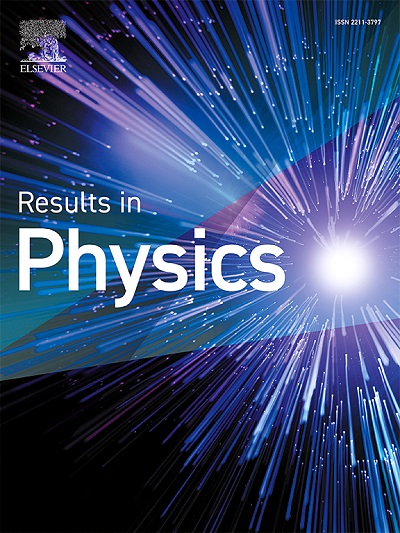Strain-engineering quantum anomalous hall state in janus MnBi2SexTe4−x monolayers
IF 4.4
2区 物理与天体物理
Q2 MATERIALS SCIENCE, MULTIDISCIPLINARY
引用次数: 0
Abstract
Exploring intrinsic magnetic topological insulators (TIs) for next-generation spintronic devices is still challenging in recent years. Here, we present a theoretical investigation on the electronic, magnetic and topological properties of monolayer (ML) Janus MnBi2SexTe4−x (1 ≤ x ≤ 3), derived from two trivial magnetic semiconductors ML MnBi2Se4 and MnBi2Te4. Our band structure analysis reveals that two out of the six Janus structures exhibit band inversion induced by spin–orbit coupling. These structures are confirmed to have nonzero integer Chern numbers, indicating their topological nature. Moreover, the topological state is robust under moderate biaxial strains. Interestingly, applying compressive strain results in a high Chern number of 2 and enhances their magnetic stability at elevated temperatures. Our findings offer an effective strategy to engineer magnetic TI states within the ML MnBi2Te4 family.
求助全文
约1分钟内获得全文
求助全文
来源期刊

Results in Physics
MATERIALS SCIENCE, MULTIDISCIPLINARYPHYSIC-PHYSICS, MULTIDISCIPLINARY
CiteScore
8.70
自引率
9.40%
发文量
754
审稿时长
50 days
期刊介绍:
Results in Physics is an open access journal offering authors the opportunity to publish in all fundamental and interdisciplinary areas of physics, materials science, and applied physics. Papers of a theoretical, computational, and experimental nature are all welcome. Results in Physics accepts papers that are scientifically sound, technically correct and provide valuable new knowledge to the physics community. Topics such as three-dimensional flow and magnetohydrodynamics are not within the scope of Results in Physics.
Results in Physics welcomes three types of papers:
1. Full research papers
2. Microarticles: very short papers, no longer than two pages. They may consist of a single, but well-described piece of information, such as:
- Data and/or a plot plus a description
- Description of a new method or instrumentation
- Negative results
- Concept or design study
3. Letters to the Editor: Letters discussing a recent article published in Results in Physics are welcome. These are objective, constructive, or educational critiques of papers published in Results in Physics. Accepted letters will be sent to the author of the original paper for a response. Each letter and response is published together. Letters should be received within 8 weeks of the article''s publication. They should not exceed 750 words of text and 10 references.
 求助内容:
求助内容: 应助结果提醒方式:
应助结果提醒方式:


